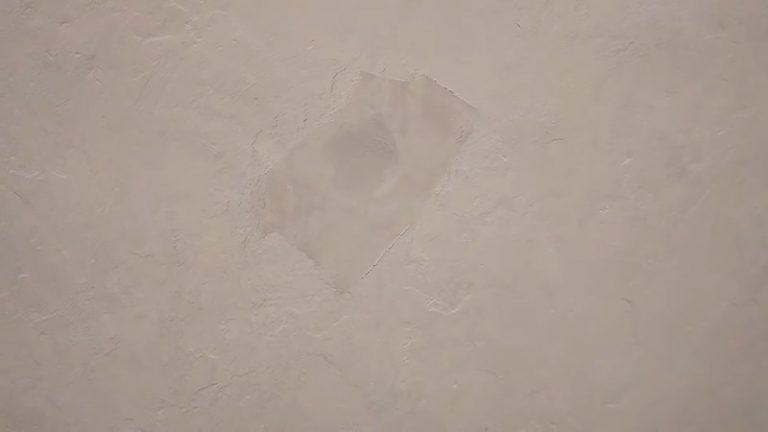Safemend Exposed: Does This “Miracle” Wall Fix Really Work?
You’ve seen the ads. A gaping hole in the drywall, a frustrating crack, or an unsightly nail pop—all magically vanished with a simple squeeze and swipe of a wonder product. Safemend promises an “instant,” “invisible,” and “professional” repair for damaged walls, but does it truly deliver on these bold claims?
Countless homeowners face the common problem of wall imperfections. These blemishes can make a well-maintained room look neglected and shabby. The traditional process of fixing them, involving spackle, primer, sandpaper, and paint, often seems daunting, pushing people to seek a simpler, all-in-one solution.
You'll Learn About
The Allure of the Quick Fix: What Is Safemend?
Safemend is marketed as a revolutionary wall-mending agent. It’s an all-in-one paste that claims to combine the properties of spackle, primer, and sometimes even paint into a single tube. The core ingredients typically include wall glue, resin, and carbonate cover, formulated to be a convenient alternative to traditional multi-step repair methods. The primary selling point is its sheer simplicity: squeeze the paste, spread it over the damage, and the job is supposedly done.
The promise is undeniably attractive. No need for multiple products, no complex techniques, and no mess. But when a solution seems too good to be true, it’s essential to scrutinize its actual performance. A deep dive into user reviews and product analysis reveals a much more complicated reality.
Deconstructing the “Miracle” Formula
At its heart, Safemend is a form of lightweight spackling compound. These compounds are known for their fast-drying abilities and ease of use, making them suitable for very minor imperfections. The inclusion of binders and resins is what allows the product to adhere to the wall and fill small gaps. However, these same properties can become significant weaknesses when dealing with more substantial repairs.
The product’s effectiveness is entirely dependent on the scale and nature of the damage. Understanding where it succeeds and, more importantly, where it fails is crucial for any homeowner considering this product. The key is to manage expectations and use the right tool for the right job.
A Critical Look: Does Safemend Actually Work?
The internet is filled with conflicting reports on Safemend’s efficacy. While some users praise its convenience for tiny fixes, a significant number of reviews point to critical flaws. The consensus is that its performance is highly situational, excelling in some areas while failing spectacularly in others.
To provide a clear answer, the effectiveness must be broken down by the type of repair. This analysis separates the marketing hype from the on-the-ground reality of drywall repair.
For Tiny Nail Holes and Minor Scuffs: A Qualified Success
This is where Safemend and similar products find their true calling. For filling in the tiny pinprick left by a picture nail or covering a small scuff mark, the product generally works as advertised. Its toothpaste-like consistency makes it easy to apply directly into the hole without any special tools.
In these low-stakes scenarios, the convenience can outweigh the product’s inherent weaknesses. For a renter trying to ensure they get their security deposit back, dabbing a bit of Safemend into a few nail holes is a quick and simple solution. The repair is small enough that issues like color mismatch or shrinkage are less noticeable.
For Medium-Sized Cracks and Dents: The Results Get Complicated
When the damage graduates from a tiny hole to a noticeable crack or a small dent, Safemend’s performance becomes unreliable. User complaints frequently highlight two major problems: shrinking and poor color matching. As the product dries, it often shrinks, pulling away from the edges of the repair and re-opening the crack it was meant to fill. This necessitates multiple applications, completely defeating the purpose of a “quick fix.”

Furthermore, the claim of an “invisible” finish is frequently contested. The product often dries to a grayish or yellowish off-white color that stands out against a standard white wall. This discolored patch can look even worse than the original damage, forcing the user to prime and paint over the area anyway—the very steps they hoped to avoid.
For Large Holes and Structural Damage: An Unsuitable Choice
Using Safemend for anything larger than a small dent is a recipe for disaster. It lacks the structural integrity of traditional joint compound or spackle. It is not designed to bridge gaps, support its own weight over a large area, or adhere properly within a deep hole. Attempting to fill a significant hole will almost certainly result in cracking, sagging, and a weak, unstable patch.
Large-scale repairs require different materials and techniques, such as using drywall tape or a mesh patch to provide reinforcement. Safemend offers no such support, making it entirely the wrong tool for these more demanding jobs. In these cases, it is not just ineffective; it can make the problem worse.
Maximizing Your Chances of Success: A Step-by-Step Guide
If you decide to use Safemend for a very minor repair, following the correct procedure can help mitigate some of its common failings. Proper preparation and application are key to achieving the best possible result, even with a limited product.
Step 1: Prepare the Surface
Proper preparation is non-negotiable for any wall repair. First, clean the area around the hole or crack to remove any dust, grease, or loose debris. Use a damp cloth and allow the area to dry completely. For any loose material, a light sanding can create a more stable surface for the product to adhere to.
Before you begin, ensure your floors are protected. Even small DIY projects can create unexpected messes. Planning for cleanup, such as knowing the best methods for ram board tape removal, can save a lot of headaches later. This foresight is a hallmark of a well-executed project.
Step 2: Apply the Product Sparingly
One of the most common user errors is applying too much product at once. To avoid issues with extended drying times and excessive shrinkage, apply thin layers. Squeeze a small amount of Safemend onto the provided scraper or a flexible putty knife.
Press the filler firmly into the hole or crack, then smooth the surface by scraping away the excess. The goal is to leave a completely flush surface with the surrounding wall. It’s better to build up the repair with two thin layers than to apply one thick, unmanageable coat.
Step 3: Allow for Ample Drying Time and Finish
Despite claims of being “quick-drying,” Safemend can remain soft for 24 hours or more, especially in humid conditions or if applied too thickly. Be patient and ensure the patch is completely hard before proceeding. Once dry, you will likely need to do some light sanding with fine-grit sandpaper to achieve a smooth finish.
After sanding, wipe away the dust. At this point, you will have to assess the color match. In most cases, you will need to apply a coat of primer to seal the patch, followed by a coat of your original wall paint for a truly invisible repair.
Safemend vs. Traditional Methods: A Head-to-Head Comparison
To make an informed decision, it’s helpful to see how Safemend stacks up against the tried-and-true method of using traditional spackle or joint compound. While convenience is a factor, it should not come at the cost of quality and durability.
| Feature | Safemend Wall Mender | Traditional Spackle/Joint Compound |
|---|---|---|
| Ease of Use | Extremely high; designed for absolute beginners. | High; requires a putty knife but is easy to master. |
| Drying Time | Often longer than advertised (24+ hours). | Varies; lightweight spackle dries in 30-60 minutes, joint compound takes longer. |
| Shrinking & Cracking | Very common, especially on anything larger than a nail hole. | Minimal with quality spackle; joint compound may require multiple coats. |
| Color Matching | Poor; often dries to an off-white, requiring paint. | Not applicable; always intended to be primed and painted. |
| Durability | Low; not suitable for high-traffic areas or large repairs. | High; creates a hard, durable, and long-lasting patch. |
| Cost-Effectiveness | Low; expensive for the small quantity and limited use. | High; a small tub of spackle is inexpensive and can be used for many repairs. |
Beyond the Hype: The Professional Perspective
Professional painters and drywall repair experts overwhelmingly favor traditional methods for a reason: they provide consistent, high-quality, and durable results. Spackle and joint compound are products specifically designed for their respective tasks. Spackle is perfect for small repairs due to its quick drying time and low shrinkage. Joint compound is the go-to for larger repairs because of its strength and ability to be feathered into a seamless finish.
The expertise lies not just in the material, but in the technique. The skill of creating an invisible patch is a valuable one, much like understanding the nuances of home maintenance. It’s similar to knowing how to handle specific tasks, whether it’s deciding on the right what size grout line for 12×24 shower wall tile or figuring out why an appliance isn’t working as expected.
Even the most intuitive tasks can have hidden complexities. People often find themselves trying to samsung washer change default settings and realize it’s more involved than it seems. Wall repair is no different; what appears simple on the surface often requires a deeper understanding to get right.
The Final Verdict: Is Safemend Worth Your Money?
After a thorough analysis, the conclusion is clear. Safemend works, but only in a very limited capacity. It is an acceptable solution for filling tiny nail holes and nothing more. For any other type of repair, its significant flaws—shrinking, cracking, poor color matching, and long drying times—make it an inferior choice compared to traditional products.
When to Consider Safemend
You might consider using Safemend if you are a renter with zero DIY experience or tools, and you need to fill a handful of minuscule holes before moving out. In this very specific context, its convenience might be its saving grace.
When to Avoid Safemend and Use Traditional Methods
For every other situation, from small cracks to large holes, you should avoid Safemend. Investing in a small tub of lightweight spackle, a putty knife, and a small sanding sponge is a far better decision. These materials are inexpensive, easy to use, and will provide a vastly superior, more durable, and truly invisible repair every time. Don’t fall for the “miracle” hype; the right way to fix your walls is often the easiest in the long run.

